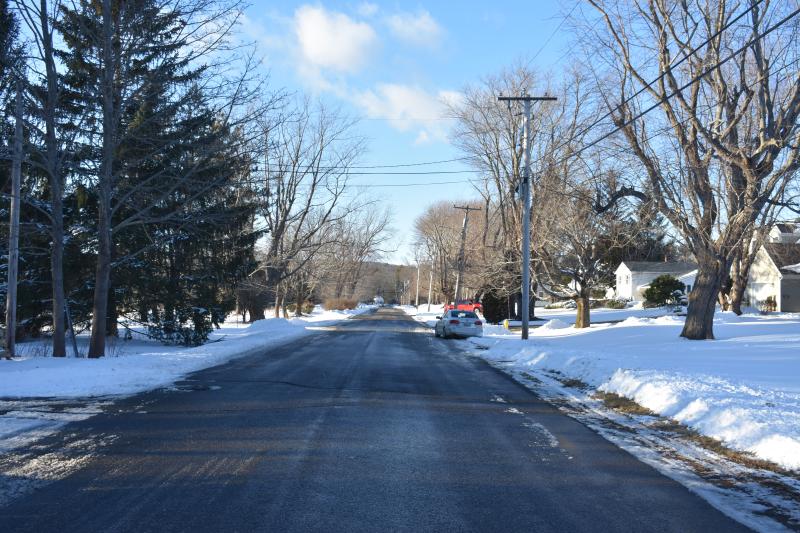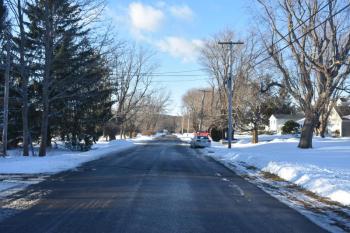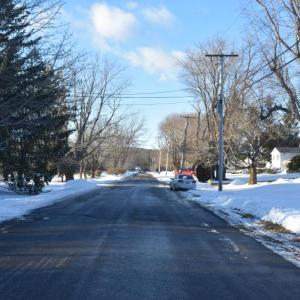What’s behind Rockland’s current zoning, accessory dwelling amendments?
ROCKLAND — Rockland can choose to keep its housing ordinances unchanged. However, as City Planner Rhett Lamb told a brand new Planning Board, Feb. 6, 2024: “To some degree, the LD2003 requirements, being state law, are going to apply anyway, whether we adopt ordinance changes or not. If somebody walks through our door and wants that other unit, and it’s allowed under state law, we’re going to have to say yes to them whether we’ve changed the ordinance or not. [And] Making it consistent with state law is a really important aspect of people’s predictability about a process and their knowledge about how they can use their property.”
As Rockland City Councilors work to make more changes to its zoning and Accessory Dwelling ordinances, it’s important to remember that these changes are required by the State. Maine cities and towns have until July 1, 2024 to conform with amendments made to LD 2003, which the State adopted in April 2022 and came into effect for Rockland at the government level on January 1, 2024.
The City, at the suggestion of the Comprehensive Plan Committee, is also considering other changes, such as setback reduction, which are not necessary under the state law. And yet, “they are necessary to actually allow LD2003 to have an affect,” said Lamb.
In March and April, Councilors have been focusing on agenda items #5 Zoning map amendment TB4 to C1 (Camden Street); #6 Art. 2 Eliminating TB4 Zone; #10 Zoning map amendment Res. AA to RR2 (Dodges Mountain).
All of these agenda items were postponed in March, and again in April, and will reappear on the June agenda.
The state has established three directives within the housing subject around:
1) Accessory Dwelling Units,
2) Dwelling Unit Allowance; and
3) Affordable Housing Density Bonus.
As of February, Rockland was focusing on the first two of those items, and will be coming back to address the affordable housing in the future.
Lamb spent about 20 minutes attempting to describe, in basic terms, a brief and broad overview of the very detailed and complex law, and how it will effect Rockland.
(Watch the video of the Planning Board meeting for the discussion. Presentation begins almost 8 minutes into the video and lasts until around 36 minutes)
What follows is some dialog from the meeting:
1) Accessory Dwelling Units (ADU) – Basically it requires cities and towns to do ADUs like we’ve been doing them since 2015.
We are shifting the definition itself. There is a requirement for a minimum size. Right now we don’t have a minimum size.
The upper limit size is 800 square feet, or two thirds of the size of the primary unit – which ever is greater.
For now, Rockland is keeping the requirement that the owner must occupy one or the other of the units. To break that would effectively dissolve the premise of “accessory,” it would just be another unit, albeit smaller than the other one.
Rockland’s city attorney has questioned whether Rockland would be able to sustain that requirement if it were appealed. The new state law does define what an accessory dwelling is, and it doesn’t say that it has to be owner-occupied. The minimum size is defined as 190 square feet.
2) Dwelling unit allowance – State law now allows additional units on existing lots, whether those were vacant lots or whether those were lots with one unit there already. If there were two units there already, no additional units were allowed. But, vacant lots and lots with one unit now are allowed one, or two, or in some cases, three additional units.
So, we have to make adjustments to that. And, we have to make adjustments in several of our zoning units to accommodate this change, which is the primary driver behind the changes that are in front of you.
There are 16 zoning districts involved anywhere we currently allow single family residential. Rockland has made changes across the board. Some zone districts get more changes, such as AA, RR1, RR2, and B.
Rockland had to make changes in all of those districts. The transitional business and commercial zones, which do allow single family, and downtown, don’t need to make this change because multifamily housing is already allowed in all of those places. Any change in density related to the dwelling unit allowance is already allowed in those places.
Multifamily, in Rockland’s zoning definition, is three units and up.
Example: Residential A: In January, prior to making changes, Rockland has to allow up to four units in order to comply with the ordinance, in an area within the growth area. LD2003 doesn’t say how much land area is needed for an additional unit. City Council has added a reduction in sewered lots from10,000 sq ft to 5,000 sq ft. For non-sewered land, the land size for the second unit is reduced from 20,000 to 10,000. If the change proceeds, a 15,000 sq ft Zone A lot could have two units on it.
3) Affordable housing density bonus – anywhere where a city or town allows multifamily dwellings, an affordable development, which is defined from a rental standpoint, as up to 80 percent of the average median income for a labor market area. If they are affordable, you can increase the density allowed in that zoning district by two and a half times.
The state law wants to focus on growth areas. Cities and towns define growth areas as where they want growth to occur. In a lot of cases, it overlaps with the presence of utilities – water and sewer – which makes development a lot easier. In Rockland, that means anything within the Old County loop, as well as the area along Farwell Drive. Rockland’s growth area has portions that are not served by water and sewer. However, this growth area is treated the same as it relates to the ordinance that is in front of you.
City Council has been asked to allow flag-lots by right instead of as conditional uses. Right now, a flag-lot can exist in the Z district, but it has to be conditional approval through the Planning Board. In an evaluation of how to help people living in Rockland who might have land, but not the capital to build a new unit – if they had that land, they could create a flag-lot without having to go through the conditional use process.
“It allows folks who might own land but don’t have enough money to build a new unit on that land, to subdivide it and sell it and create a new lot for that purpose,” said Lamb.
Comprehensive Plan Committee has suggested changes to setbacks for both A and AA districts. Those set backs are substantial. Setbacks are meant to serve the neighborhood, so that people have buffers between yards, and to allow space for utilities at the front of the house. For a 10,000 sq ft lot in the A zone, if the lot is 100 x100 sq ft, approximately 60 percent of the land is set aside as setback.
“That’s a lot,” said Lamb, who said that in his experience, 60 percent is on the higher side than what he’s ever heard.
Reach Sarah Thompson at news@penbaypilot.com
























